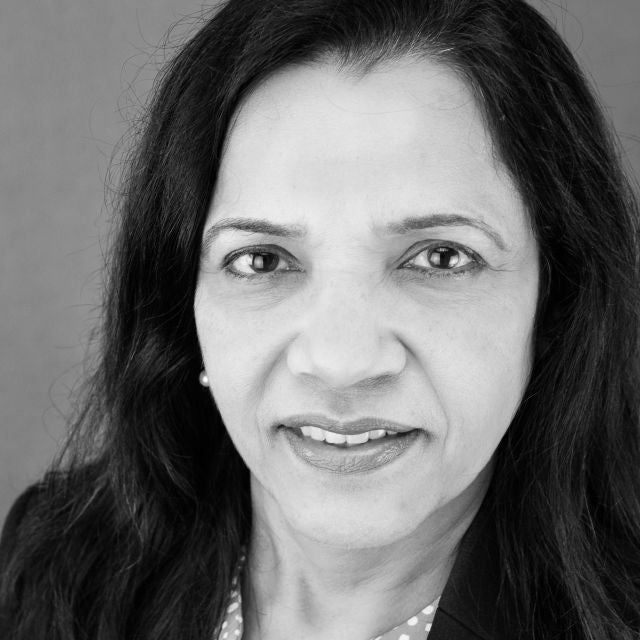Rapid and significant changes driven by technology in a digital age characterize our society today. Our communities are increasingly diverse, we have become global citizens, the Internet has made for instant communication across international borders. Yet, inter-group conflicts over race, ethnicity, religion, gender, and social class are still pervasive in our societies leading to war, racism, violence and terrorism. Our inhumanity emerges as we show less tolerance for those who are different. What does this mean for leadership today? Are our leadership models inclusive to reflect the diversity of our leaders and the organizations and communities in which they exercise leadership? I think not. We omit attention to diversity in our leadership research, training, practice, and policy.
We continue to privilege leadership styles more typical of a narrow cultural type, i.e., white, Western, heterosexual men. It’s time for us to reexamine leadership in the 21st Century if we are to prepare our leaders to lead a diverse workforce and provide products and services to a diverse clientele. What will we teach our future leaders? Command and control styles of leadership seemingly went out of style after World War II. Through the 20th century, we experimented with post-colonial and post-industrial ways of leadership that shifted our emphasis producing goods and products to a digital age of producing services.
Servant leadership emerged to empower the people during the height of the Civil Rights, Women, and Peace Movements of the 1960's. Transformational leadership became popular to provide the vision and inspiration for change. Ethical and authentic leadership emerged following the Enron scandal in 2001 over fraudulent auditing practices and financial reporting that led to bankruptcy of the Enron Corporation and the dissolution of Arthur Andersen, one of the five largest accounting firms in the world. Our leadership models have not kept pace with how to lead in an increasingly diverse and global society and organizations. No have we recognized how diverse leaders and leadership styles can be effective in an increasingly global and diverse world.
What Do You Want in A Leader?
Who best can lead in today’s global and diverse world? Must our leaders look like us and share our beliefs and values? The importance of diversity in our lives, communities, and workplaces has simply not infused our understanding of leadership. Our theories on leadership have neglected differences in access to leadership positions and in how leadership is exercised depending on your social group. We often train our leaders to conform to a prototypic leader which mirrors those already in leadership positions—white, Western, heterosexual men who currently predominate as leaders. Currently, our “rules” about what is good leadership or who makes good leaders are often narrow and culturally specific—premised globally on the leadership of white, North American males—allowing little room for diversity within leadership ranks. Disparities in the representation of women and racial/ethnic minorities within the ranks of leadership in in corporate, higher education, and political sectors attests to this. Even when women and ethnic minorities enter these hallowed ranks of leadership, they become just like the leaders who are there (Zweigenhaft and Domhoff, 2006). As a result, we lead based on policies and practices that reinforce values held by the dominant group. We need to broaden our notions of effective leadership styles that lead to greater intergroup and intercultural understanding. We need to challenge our existing notions of who is and can be a leader to encourage diverse and more inclusive models of leadership.
A Lesson in Unlearning
Having spent last year at the University of Sydney in Australia as a Fulbright Scholar and Distinguished Chair, I was welcomed to campus with banners calling for Leadership for Change as part of their strategic plan to transform the university as a place that values multiple knowledges including indigenous knowledge to have Leadership for Good. Toward this end, it offers a lesson in Unlearning: “Throughout our lives we’re taught important lessons. We learn how to talk, to write, even how to behave. But there’s one important lesson most of us never get—a lesson in unlearning. It is only by challenging the established, questioning the accepted and being brave enough to break down old rules that we can write new ones.” They aim to re-imagine learning so that students can re-imagine the world. I bring this lesson to defining what leadership means today. We need to re-imagine the way we lead and the way we teach so that our leaders can re-imagine the world. It’s time to have leadership for change. Defining global and diverse leadership means paradigm shifts—unlearning—toward more inclusive theories of leadership and incorporating dimensions of diversity in our understanding of leadership—which might include humane, benevolent, and collaborative leadership. It means recognizing how perceptions and expectations of leaders based on their social identities often constrain them from recognizing effective leadership among women and racial/ethnic minority leader. Dr. Chin will be presenting more on the topic of global and diverse leadership as a part of the CSPP Lecture Series. Please join us at Alliant International University, San Diego campus, on Thursday, June 20, 2019, at 1:30 pm.

